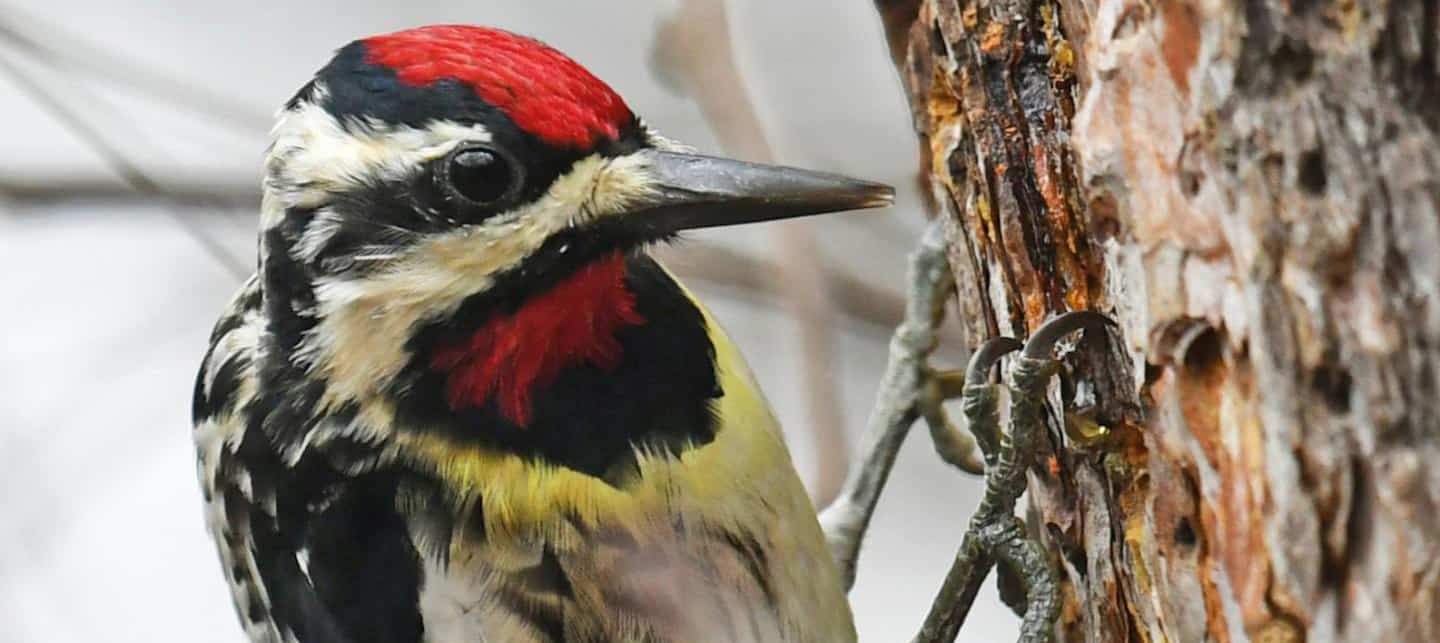Share this article
Bird numbers change with the weather
Climate change — and the frequent and intense extreme weather it can bring — influences some birds differently than others.
In a study published in Global Change Biology, researchers tapped into a wealth of bird data to determine how different factors — things like migration distance, diet, how common the species is, foraging strategy and nesting location — impact their numbers in response to extreme weather. Much of their data came from eBird, a citizen science platform where people around the world can log birds they see.
“We chose to work with birds, because number one: birds are awesome. And number two: there’s lots of really good data available when it comes to birds,” said lead author Jeremy Cohen, a postdoctoral research at the University of Wisconsin-Madison.
“The reason we’re so excited about this study is because it’s pretty unique,” Cohen said. While past research used bird banding to document how weather may have impacted one or a few species, he said, their research “is the first study where we’re able to look at immediate responses of wildlife to extreme weather over the scale of a continent.”
The team collected eBird data from the past 15 years on 109 bird species across eastern North America. When people submit their sightings to eBird, they are encouraged to document all of the species they see in a given area — what they call a complete checklist. That helped the team determine which species were or were not present in a given area at a given time.
Then, the team used NASA satellite data offered by Daymet containing daily, fine-scale information on weather and precipitation across North America dating back to 1980. For each cell on the map in eastern North America, they overlaid points where the birds were found and calculated the baseline average temperature. Then, they obtained temperatures and weather data immediately preceding each checklist and determined which conditions were extreme by finding the difference between recent weather and the historic baseline. They did this for the week, month and 90 days before about 800,000 eBird checklists.
Some species didn’t seem affected at all by extreme weather. Others were impacted greatly. “There was huge variation among birds,” Cohen said.
When they delved into the different factors, the team found resident species, like cardinals (Cardinalis cardinalis), chickadees and blue jays (Cyanocitta cristata), as well as birds that only migrated within the U.S., like eastern bluebirds (Sialia sialis), yellow-bellied sapsuckers (Sphyrapicus varius), northern flickers (Colaptes auratus) and plenty of sparrows, occurred less often when there was extreme weather.
Birds like Baltimore orioles (Icterus galbula) and scarlet tanagers (Piranga olivacea), which migrate to the tropics, were less sensitive to extreme heat. Some species saw their numbers increase. “The reason they might not care is because they spend their winters in the tropics, where they’re used to very hot and dry conditions,” Cohen said. In addition, they might be foraging on insects, which are more abundant when it’s hot.
Rainfall also influenced bird abundance. When researchers looked at weather conditions 90 days prior to eBird checklist submissions, they found that dry conditions mostly affected less common species. Common species like American crows (Corvus brachyrhynchos), robins (Turdus migratorius) and house sparrows (Passer domesticus) were unaffected.
“More common species tend to be generalists, which can live in a variety of habitats and use multiple food sources,” Cohen said. “But less common species tend to be more specialized and eat one food source or live on one type of habitat.” When a drought comes through, he said, generalists may have more options.
Cohen hopes this information can be used along with other data on how species are impacted by things like land use change and pollution to help inform conservation. “I hope this gives managers an idea of which species might be most sensitive when we know it’s going to be a very hot or very dry year,” he said.
Header Image:
Short-distance migrants like yellow-bellied sapsuckers saw reduced numbers due to heat waves.
Credit: Jeremy Cohen








